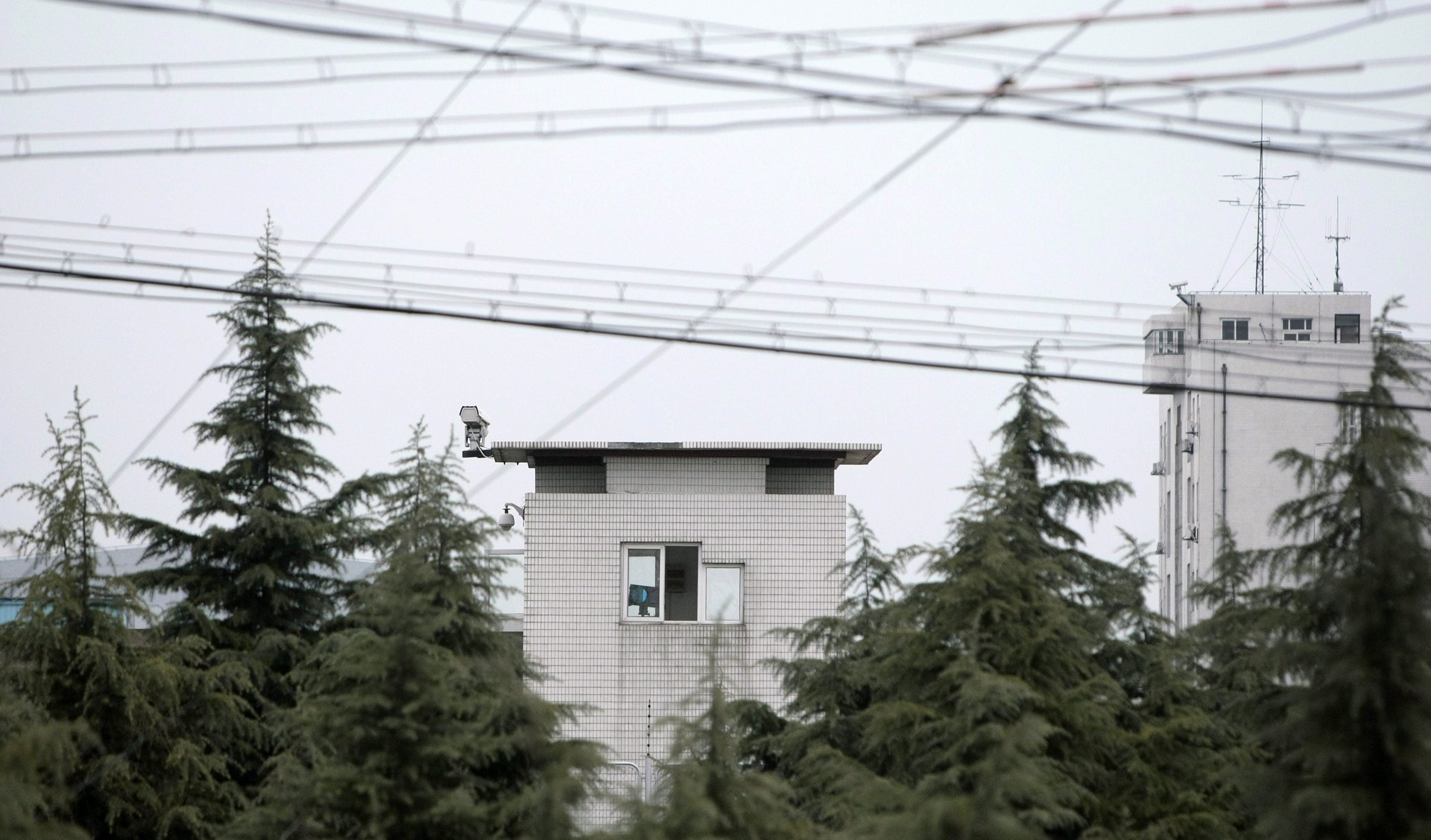Chinese prisoners allegedly made products for H&M and C&A
Peter Humphrey, the British private investigator whose arrest and nearly two-year-long detention by Chinese authorities made international news, has written an account of his ordeal in the Financial Times (paywall). His revelations about life in Qingpu Prison, on the outskirts of Shanghai, over several months in 2014 and 2015 focus mostly on the grim, dehumanizing conditions he endured. But he also shares a detail that should alarm some international companies manufacturing in China.


Peter Humphrey, the British private investigator whose arrest and nearly two-year-long detention by Chinese authorities made international news, has written an account of his ordeal in the Financial Times (paywall). His revelations about life in Qingpu Prison, on the outskirts of Shanghai, over several months in 2014 and 2015 focus mostly on the grim, dehumanizing conditions he endured. But he also shares a detail that should alarm some international companies manufacturing in China.
The prison, he says, “was a business, doing manufacturing jobs for companies.” Among the brands whose names he recognized on products were the European clothing giants H&M and C&A, and the US consumer-products maker 3M. Humphrey writes in FT:
Mornings, afternoons and often during the after-lunch nap, prisoners “laboured” in the common room. Our men made packaging parts. I recognised well-known brands — 3M, C&A, H&M. So much for corporate social responsibility, though the companies may well have been unaware that prison labour was part of their supply chain. Prisoners from Chinese cell blocks worked in our factory making textiles and components. They marched there like soldiers before our breakfast and returned late in the evening. The foreigners who laboured in my cell block were Africans and Asians with no money from family, and no other way to buy toiletries and snacks. It was piece work; a hundred of this, a thousand of that. Full-time, they earned about Yn120 (£13.50) a month.
Prison labor in itself doesn’t violate the conventions of the International Labour Organization. As Humphrey indicates, the foreign prisoners were paid and didn’t appear to be forced to work. Whether the Chinese prisoners were paid for their labor is unclear, as is which products for each brand the prisoners were producing. We have reached out to Humphrey for more information through his investigative firm, ChinaWhys, and will update this post with any reply.
Even so, many international brands do not allow prison labor in their supply chains. It can veer dangerously close to forced labor—which is why the ILO keeps clear guidelines on when the practice is acceptable. But it can be near impossible to make sure these rules are followed, which is why the Ethical Trading Initiative says companies would be “foolish” to believe that prison labor complies with ILO standards.
Many companies don’t allow it in their supply chains at all. H&M requires its supplier factories to sign a commitment that explicitly says “forced labour, bonded, prison or illegal labour is not accepted.” Asked about Humphrey’s allegations, a spokesperson for H&M said, “To our knowledge, there have been no violations. But needless to say, we take the information published by the Financial Times very seriously.” The spokesperson acknowledged that there have been rumors of prison labor in China in the past, and the company has reminded its Chinese suppliers that its stipulations on prison labor are non-negotiable. Failure to comply “would lead to a permanent termination of our business contract,” the spokesperson said.
C&A’s supplier code of conduct (pdf) prohibits prison labor in the section on forced labor, and elsewhere says plainly, “C&A does not permit the use of prison and/or detained labour in any form.” A spokesperson for C&A responded to questions about Humprey’s account, saying, “We audit all 273 of our suppliers’ factories in China on at least annually basis, and have not observed or been made aware of the use of prison labor in our Chinese supply chain.” C&A has auditors and quality-assurance teams with measures in place to catch any unauthorized subcontracting, the spokesperson added. Suppliers that violate their agreement with C&A are “terminated with a long term remediation plan.”
The supplier responsibility code for 3M (pdf) prohibits forced labor and “involuntary prison labor.” It is not clear whether 3M would approve of the conditions Humphrey describes at Qingpu. Update: In a statement emailed to Quartz, a spokesperson for 3M said the company “does not engage or participate in exploitative working conditions, and we are not aware of any 3M suppliers in China using prison labor. We take our commitment seriously and are investigating Mr. Humphrey’s report.”
Even if prisoners were laboring to make or package products for these companies, the companies themselves may not have been aware, as Humphrey points out. Often brands will contract work to one factory, and that factory will subcontract the work to another factory. Bangladesh’s garment industry is notorious for the practice, but it has been known to happen in various countries, including China. Some Chinese textile firms have been reported to subcontract work across the border to North Korea, then apply “Made in China” tags to the items. In other cases, factories will subcontract work to prisons for their cheap labor.
Humphrey wound up in Qingpu Prison after he and his wife Yu Yingzeng, a Chinese-born American, were arrested in 2013, while working for pharmaceutical company GlaxoSmithKline. Glaxo hired them to look into allegations that its China operation was bribing doctors. The Chinese government started its own investigation into Glaxo’s China division, and detained Humphrey and Yingzeng, holding them without trial for 13 months. Both were ultimately convicted in Chinese court of “illegally acquiring citizens’ information”—accusations Humphrey vehemently denies—and sent to prison. Humphrey’s term was 30 months, and Yingzeng’s was 24 months.
They were released in June 2015 (paywall), with seven months left in Humphrey’s sentence, after his health deteriorated enough that he had to go to a hospital.
This story has been updated with comment from 3M.